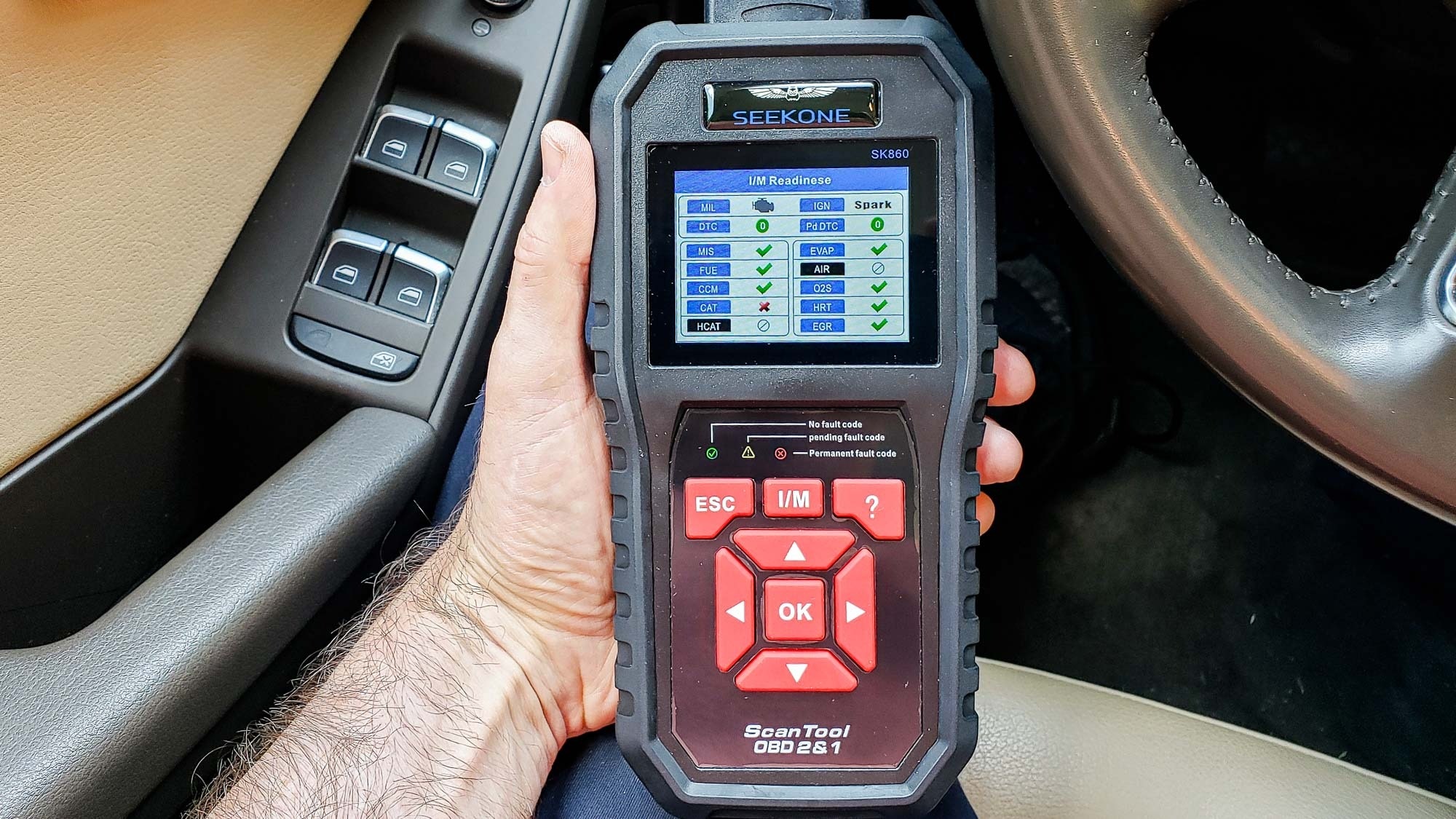Understanding your vehicle’s health can seem like navigating uncharted waters. However, utilizing a scan tool to interpret OBD-II codes transforms this challenge into an efficient process, offering actionable insights into your vehicle’s performance. Whether you’re a car enthusiast or a professional mechanic, this guide will help you harness the full potential of scan tools for advanced diagnostics. For more tips on optimizing vehicle health, explore Vehicletradeus.
What is OBD-II and Why is it Important?
The On-Board Diagnostics II (OBD-II) system is a universal standard implemented in vehicles since the 1990s, providing access to a wealth of information about a car’s performance and health. This system constantly monitors components like the engine, fuel efficiency, and emissions.
When a fault occurs, the system generates Diagnostic Trouble Codes (DTCs) that can be accessed via a scan tool. These codes act as a roadmap, leading you directly to the source of the problem. For example, a P0300 code indicates random engine misfires, while a P0456 code signifies a small emissions system leak.
Choosing the Right Scan Tool for OBD-II Diagnostics
Finding the ideal scan tool is crucial for accurate diagnostics. Advanced tools provide more detailed data and functionalities than basic code readers.
Key Features to Consider:
- Live Data Monitoring: Observe real-time performance metrics.
- Wide Compatibility: Ensure the tool works with your vehicle’s make and model.
- Bi-Directional Control: Command certain systems to verify their functionality.
- User Interface: Opt for tools with easy-to-understand navigation.
Top Recommendations in 2024:
- Autel MaxiCOM MK808: Best for mechanics with multi-system coverage.
- BlueDriver OBD2 Scanner: Ideal for DIYers with its smartphone app integration.
Decoding OBD-II Codes: The Basics and Beyond
Interpreting OBD-II codes isn’t just about reading numbers. Each code consists of five characters:
- First Character: System category (e.g., P for powertrain).
- Second Digit: Code type (e.g., generic or manufacturer-specific).
- Remaining Digits: Specific issue identification.
For instance, a P0171 code suggests a lean fuel mixture, but its root cause could be anything from a vacuum leak to a malfunctioning mass airflow sensor. Proper interpretation often involves correlating the code with symptoms and system behavior.
While it might seem unrelated, tire health can influence OBD-II codes. Damaged or improperly sized tires can affect systems like ABS, triggering warning lights and error codes. Wondering are used tyres safe? They can be a reliable choice if inspected for adequate tread depth and wear.
Read More Also: Does Goodwill Wash Clothes They Sell?
How to Use a Scan Tool for Diagnostics
Step-by-Step Guide:
- Locate the OBD-II Port: Usually under the dashboard near the steering wheel.
- Plug in the Scan Tool: Ensure a secure connection and power on the device.
- Retrieve the Codes: Navigate the tool’s menu to access stored DTCs.
- Analyze the Results: Use reference materials or built-in databases to interpret the codes.
- Plan Repairs: Based on the diagnosis, decide whether repairs are DIY-friendly or need professional attention.
The Benefits of Utilizing a Scan Tool for OBD-II Codes
- Cost Efficiency: Save on diagnostic fees by identifying issues independently.
- Preventative Maintenance: Catch problems early before they escalate.
- Enhanced Vehicle Performance: Adjust components like fuel systems for optimal operation.
- User Empowerment: Gain a deeper understanding of your car’s systems.
Common Challenges and Solutions in OBD-II Diagnostics
Challenge: Misinterpreted Codes
- Solution: Use manufacturer-specific resources and forums for precise diagnosis.
Challenge: Persistent Check Engine Light
- Solution: Verify repairs, clear codes, and monitor for reoccurrence.
Challenge: Tool Compatibility Issues
- Solution: Verify compatibility with your car’s make, model, and year.
FAQs
How accurate are OBD-II scan tools?
OBD-II tools provide reliable insights, but accuracy depends on the tool’s quality and the user’s interpretation skills.
Do I need a professional scan tool for basic diagnostics?
For routine issues, basic scan tools suffice. Advanced tools are better for in-depth analysis and bi-directional controls.
Why do codes return after clearing them?
Codes can reappear if the underlying issue hasn’t been fixed or if the system detects related faults.
Can I damage my car using a scan tool?
No, when used properly, scan tools are non-invasive and safe for your vehicle.
What’s the difference between generic and manufacturer-specific codes?
Generic codes are standardized, while manufacturer-specific codes provide insights unique to a brand’s systems.
How often should I use an OBD-II scan tool?
Periodic checks every few months can help detect issues early, but always use one when the check engine light is on.
Conclusion
Mastering the art of utilizing a scan tool to interpret OBD-II codes empowers you to keep your vehicle in peak condition. From identifying simple fixes to preventing costly repairs, OBD-II diagnostics save time, money, and stress.
